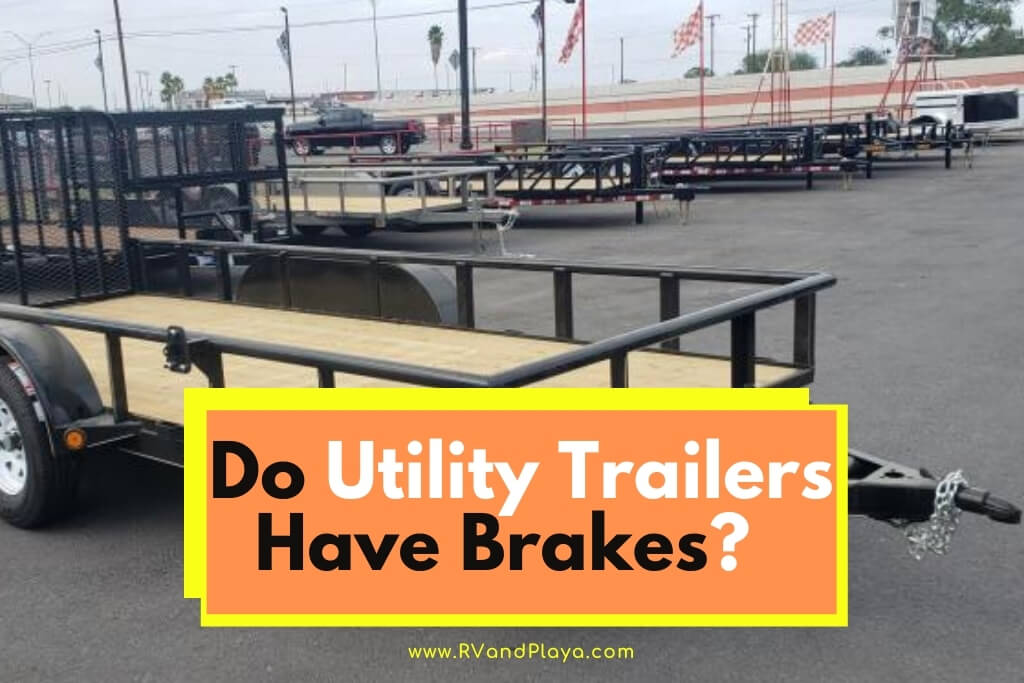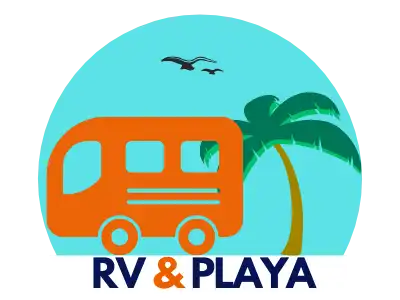Do you know if utility trailers have brakes? this is one of the questions our readers ask a lot. Well, we´ve got you covered.
The most important thing when you are driving from point A to point B is to safely finish your trip.
Part of that safety is also being able to bring your vehicle to a stop when needed.
This becomes even more important when you are towing a utility trailer loaded up with a weight of any kind.
Because the utility trailer is not part of towing vehicle, it can behave in a slightly erratic manner when braking only with the brakes of towing vehicle.
This is why you might ask do the utility trailers have brakes?
The short answer is that it depends on several factors, but the general rule is that utility trailers with two axles and designed GVWR of 3,000 pounds or more do have brakes.
Let’s get into more details of this answer.
Table of Contents
Do Utility Trailers Have Brakes?
Whether a utility trailer has brakes or not depends very much on the laws and regulations of the roads.
In the States, such laws differ from state to state, and in short, they are not grandfathered.
This means that whether a trailer must have brakes depends on which state it is used. The vast majority of states have the minimum GVWR limit above which all trailers must have brakes.
Some states, such as New York and North Carolina, have a limit of as little as 1,000 pounds.
On the other end of the scale, Massachusetts has the limit set at 10,000 pounds GVWR.
The majority of states have this limit set to 3,000 pounds or defined as the maximum braking distance when stopping from a certain speed, which for all intents and purposes is equivalent.
GVWR or Gross Vehicle Weight Rating is the manufacturer design specification of a trailer and the maximum weight any vehicle can have when loaded to its maximum capacity.
Because of these variances in state regulations, the industry standard is that all utility trailers with more than one axle or with GVWR above 3,000 pounds have brakes.
Read also: How Much Can You Tow Without Trailer Brakes?
Types Of Utility Trailer Brakes
While the utility brakes come in both types, disc and drum design, as the brakes for other vehicles, there are also four different types divided by the mode of their activation.
These types are electric, electrohydraulic, surge hydraulic, and air brakes.
- Electric brakes are per rule the drum type and require a controller inside the cabin of a towing vehicle that detects acceleration and deceleration and then when needed increases voltage in electromagnets that grip the then push against the braking surface.
- Electrohydraulic brakes can be either drum or disc and, in their design, the controller inside the cabin is activating an electromotor pump that produces hydraulic pressure for activating brakes.
- Surge hydraulic brakes have specially designed hydraulic systems that are mounted on the trailer’s tongue which is able to detect inertia of acceleration and deceleration and thus generate appropriate braking force.
- Air brakes are similarly designed as electrohydraulic brakes, but instead of the hydraulic oil, they use the air.
All of these four types of trailer brakes have certain advantages and drawbacks.
Electric brakes are the most affordable ones and provide the quickest activation time, but maximum braking power is relatively low and has wiring which can break.
The electrohydraulic brakes are more expensive and have a larger number of parts that could fail but can provide more braking power and can be the disc type which is more efficient than drum brakes.
Surge hydraulic brakes have the least number of parts but are the most expensive and require a pin to be installed when backing with a trailer.
Air brakes are the most reliable but require an air compressor to exist in the towing vehicles, which is why they are present only on commercial trailers pulled by the semies.
Read also: Do Jayco Trailer Have Brakes
When It Is Required That Your Utility Trailer Has Brakes?
Your utility trailer has to have brakes when the law of the state in which you are towing it requires you to.
So here’s a quick list of the states divided per the minimum GVWR limits above which your utility trailer must have brakes:
- 1,000 pounds: New York and North Carolina
- 1,500 pounds: California, Indiana, and Nevada
- 2,000 pounds: Mississippi
- 3,000 pounds: Alabama, Arizona, Arkansas, Colorado, District of Columbia, Florida, Georgia, Hawaii, Idaho, Illinois, Indiana, Louisiana, Maine, Maryland, Minnesota, Montana, New Hampshire, New Jersey, New Mexico, Ohio, Oklahoma, Pennsylvania, South Carolina, South Dacota, Tennessee, Vermont, Virginia, Washington, West Virginia, and Wisconsin
- 4,000 pounds: Delaware
- 4,500 pounds: Texas
- 5,000 pounds: Alaska
- 10,000 pounds: Massachusetts
The missing nine states have differently defined requirements for brakes on a trailer:
- Kansas, Kentucky, Oregon, Utah, and Wyoming; require that a combination of towing vehicles and trailers can be stopped within 40 feet from a speed of 20 mph.
- Michigan, besides the above criteria, if trailer has GVWR under 3,000 pounds but makes more than 40% of towing vehicle’s GVWR must have brakes.
- Missouri doesn’t have a GVWR or braking distance lower limit, but all 5th wheel trailers must have brakes.
- Nebraska’s law states that trailers with GVWR between 3,000 and 6,500 pounds must have brakes on at least two wheels, and above 6,500 on all wheels no matter how many they have.
- North Dakota has a regulation that says that if the trailer is towed at a speed above 25mph it must have brakes.
What Is Breakaway System?
The breakaway system is one of the most important safety devices that are part of the braking systems on any utility trailer.
One of the greatest dangers on the roads when towing a trailer is it getting unhitched and careen without control across the road.
The breakaway system, often also called an emergency brake, is a device that detects that the trailer is unhitched and activates the brakes on the trailer that then brings it to stop.
These systems are most commonly consisting of a battery, controller, and safety cable connected to towing vehicle’s hitch.
Here are some of my favorite services, products, and Stores
Thank you for reading this article. I hope it helps you find the most recent and accurate RV, camping information. Here are some services, products, and Stores that I use and hope you´ll also find helpful.
There are affiliate links, so if you do decide to use any of them, I´ll earn a small commission. But in all honesty, these are the exact what I use and recommend to everyone, even my own family.
To see all my of most up-to-date recommendations, check out this resource that I made for you!
References
Recent Posts
Trailer Brake Controllers: 25 Facts You Should Know (Explained)
Are you looking for trailer brake controllers? If you are towing any sort of trailer with your vehicle, then you will almost certainly need to have brakes on the trailer. If you have brakes on the...
If My Trailer Has Electric Brakes Do I Need A Brake Controller? (Explained)
Does your trailer have electric brakes? Wondering if hooking the brakes up to an electrical system is going to be enough to ensure that the brakes are functioning? Read on! The Job of a Brake...


